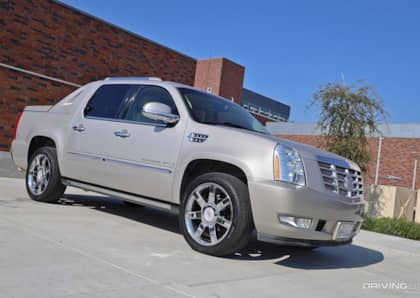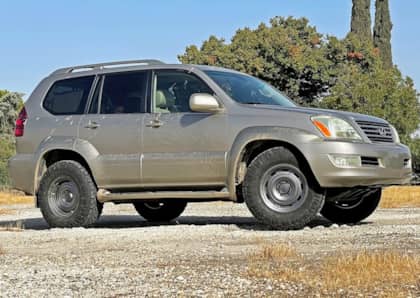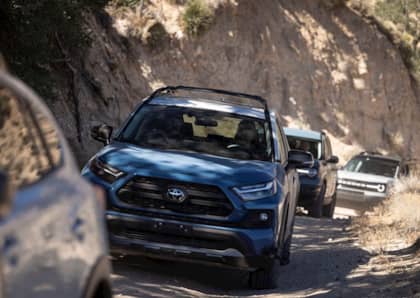The Perks of Cool Weather Camping and How to Prep
If you can beat the cold, no outdoor experience can compare to camping in northern climes in the "off-season," especially when there's a layer of snow insulating the landscape. Sounds are less likely to carry through snow, and sitting in the rare absolute silence is a grounding experience. Cool air means less moisture in the atmosphere, so a clear night sky appears even brighter. Food never tasted better than out in the winter wilderness, where it’s so cold that all other scents are seemingly nonexistent. The only smells hitting your nostrils are of the hard-earned food in front of you. Even plain oatmeal from a Jetboil in the morning tastes delicious, and coffee has an extra kick. Oh, and no bugs are around to land in it!

Prepping for cool weather camping is a bit different than packing for perfect temps. In the cold, what would normally be a minor setback could go downhill more quickly. That’s why we’re here to share a few tips on how to hold in the heat.
Travel safe.
This topic has been covered time and time again, so we’ll keep it short, but it is of utmost importance. We always recommend traveling off-road with a group, but in frigid weather, your friends could be your lifeline. When a vehicle completely loses power in the middle of nowhere, keeping from freezing becomes a concern. Even if someone gets too stuck in the deepest of snow, another vehicle can backtrack to get help. It doesn't hurt to bring a reliable set of MaxTrax as part of your recovery gear collection, along with the usual tow ropes, shackles, and heavy-duty work gloves.

We recommend bringing multiple shovels. That way, you'll have the option of coercing others to help dig, have an extra in case one breaks, and you'll have a shovel for each purpose, from clearing out a snow-filled campsite to digging out your "toilet." We prefer lightweight aluminum shovels as opposed to plastic, and a combination of spade, flat and extra-wide for major digging.

The most crucial upgrade for your rig is in the name of traction. You need tires that can handle slush and mud, and gobble through light or deep compact snow. Rubber, such as Nitto Tire's Trail Grapplers or Terra Grappler G2s, will get you there in confidence. Remember to utilize the tire's extra surface area for floating over deep snow by airing down.
Bundle up.
Did your parents ever tell you to bundle up and dress in layers for winter play? The same rule applies here, but bring extra. Always carry a spare hat and a set of mittens. No matter how diligent you are, you will, even if just for a moment, lose a hat or a glove. A lack of layer options can leave you feeling uncomfortable, drained, and ultimately could ruin your trip. Thermals and many pairs of thick socks are a must-have if you are crazy enough to camp in the dead of winter. Pack your whole closet if you have to. Don’t wait until you’re already losing feeling in your fingers and toes to remedy the situation. Be aware of the temperatures, and as soon as the digits start to drop, layer up. If you wait until you’re already cold, it will take more energy and much more time to warm back up.
Sleeping quarters setup.
Before setting up camp, assuming there is snow, you’re going to want to pack down your campsite, especially if you are tent sleeping. Stepping into a soft bit of snow could rip a hole in the floor of your tent. Fearing a nasty ankle twist will also get old fast. A pair of snowshoes make an excellent tool for packing the snow down, but it is doable in a good pair of boots.

If you are tent camping, a cot or portable blow up pad will keep the cold ground from feasting on your body heat. Pro-tip: Double height air beds are great in terms of comfort and ease for getting on and off, but they draw in the cold. Switching to a good quality single-layer Thermarest or even a thick foam pad (or five) will make a huge difference to your warmth at night. Layering your tent or camper floor with carpets or rugs provide extra insulation from the ground. In regards to tent materials, canvas or polycotton work best for minimizing heat loss. Smaller sleeping quarters are best for heating quickly and maintaining comfortable sleeping temps.
Sleeping bags 101.
Investing in down insulation will keep you extra toasty. However, many innovative synthetic sleeping bags on the market are made to trap heat, even in negative 20°F temps and below. That’s right: we aren’t the only crazy people in the world that love to camp in the cold. Make sure you aren't attempting to sleep in cold weather using a cheap sleeping bag or a bag meant for summer use. Every sleeping bag should have a season rating somewhere on its tag. You’re looking for a three or four-season rated bag, depending on just how cold you want to camp. A close-fitting mummy bag is the best option for warmth, and if you’re camping with a special someone, the two-person version isn’t bad, either. (Wink, wink). Fleece sleeping bag liners will help trap even more heat, and always take extra blankets, especially if you're traveling with little ones. Thick, fleecy thermal blankets make a big difference on frigid nights.

Condensation is a constant battle in cold temp camping, but there are ways to fight it. A VBL or vapor barrier liner for your sleeping bag will prevent freezing of the sleeping bag's outer layer, where the warm air meets freezing air. If it's not snowing the next morning, turn your sleeping bag inside-out and lay it on top of your tent or vehicle to air out during the day. This is where choosing a sleeping bag with a black interior comes in handy: it will absorb more warmth from the sun and dry faster.
Warmth by fire.
Camping doesn’t feel complete without a crackling fire, but keeping a fire going can be a challenge when the ground is wet or snow-covered. The trick is to make the fire burn hot from the start. Like any typical camping trip, bring an ax and hand saw or chain saw for wood and kindling gathering. Remember only to cut already dead and fallen trees, which can be a challenge in wet or snow-covered conditions. Take the exposed dry remains to get the fire going, and, if you can, save a few dry logs to give it a boost when needed. Once the fire is roaring, place any wet or frozen logs in a cleared-out spot near the fire pit's heat to dry.

To start your fire, you'll first need to clear the area of snow the best you can and pack down any remaining snow. In extra-deep snow, it's helpful to bring spare dry (glue-free) wood blocks, such as two-by-four scraps, to stack in a tick-tac-toe like pattern for a platform. This base will elevate the fledgling fire until enough coals are built up to dry the ground beneath it. A stack of strategically stacked 1-inch thick sticks will do just fine, too. A thin sheet of metal placed underneath the base is another easy way to separate the wood from melting snow or soggy ground. Or if you really want to come prepared, a portable firepit is worth considering. Place a few Vaseline-soaked cotton balls, separated to reveal their fibers, in the center of your base. Lightly cover the cotton balls with thin, dry bark and the light the fire. Add small twigs and other kindling, being mindful not to suffocate the flame, until it stabilizes enough to add larger wood pieces. If you need more tips and visuals, we found this deeper dive into fire-starting. The action starts at around 4:55.
For the extra-cold nights.
There are more ways to stay warm through the exceptionally cold nights. Snuggling up to a hot water bottle is the safest way to warm up quickly, but it does require a camping stove and kettle. A gas-powered Buddy heater is another popular go-to item, but use with caution as they need plenty of ventilation to operate. A quick 20-minute warm-up usually does the trick, always shutting it off before sleep time. A candle lantern safely hung on the inside of your tent does wonders to both warm your tent and reduce condensation. Popping a couple of disposable heat packs or reusable gel pad warmers in either pocket or your socks or sleeping bag can be the difference between sleep or shivering. Whichever methods you choose, don’t go to bed cold. Your body temp will be more challenging to stabilize even with all your layers and extra-thick bedding. We won’t judge if you do jumping-jacks or shake your stuff to up your core temp before hitting the sack.

One more tip: The cold drains batteries. Use lithium batteries in all your winter electronics. Not only does lithium perform consistently down to much colder temperatures than alkaline or NiMh batteries, but they are lighter and last three-times longer.
When you gotta go, you gotta go.
Have you ever exited a warm vehicle or building to venture into the freezing cold, only to immediately feel your bladder tighten? It's not all in your head. Being cold can cause frequent urination, and we know how inconvenient it is to leave your toasty cocoon and brave the night's frigid temps, which will surely whip against your nether regions while you struggle to relieve yourself. There’s no shame in bringing a WELL-MARKED wide-mouth pee bottle (with a tightly sealing lid, duh) into your sleeping quarters to simplify your nightly continence. Ladies may want to pair it with one of the many special urinating devices that are available.

Everybody poops, so since we’re on the topic, we’ll just mention the importance of bringing extra toilet paper. Reaching for soft leaves out of desperation likely won’t be an option. Always dispose of the paper in the trash or burn it. It takes longer to break down than you may think, especially in cold weather. If there’s no access to a portajohn and you need to find a private spot, bringing an extra hand shovel, a small garbage or grocery bag, and a roll of TP could be your saving grace. Pucker up: If worse comes to worst, snow is an effective, ubiquitous cleaner. (Yeah, we went there.)
Stay hydrated.
Another great thing about winter camping is that Mother Nature will keep your drinks cold. A snow-cooled beverage of choice is hard to beat, and it leaves more room in your cooler for food. A Jet Boil is a handy portable device if you desire a warm beverage or meal without having to hook up a bigger burner or needing to clean a larger pan. It can also be used to boil snow for water. Don't be suckered into thinking glacial melt or fresh snow is sterile–that's a myth. Snowflakes frequently form around small bits of dust, or nucleation sites, which can be bacteria or viruses floating in the upper atmosphere.
If you carry a large water storage jug, turn it upside-down to store it overnight. Ice forms from the top down, so keeping the opening of your container facing down keeps it from freezing. You can also insulate it, or simply store it in your vehicle for extra protection against freezing.
Winter camping still not your thing? While you wait for warmer weather, tick these items off of your off-roading survival checklist.











